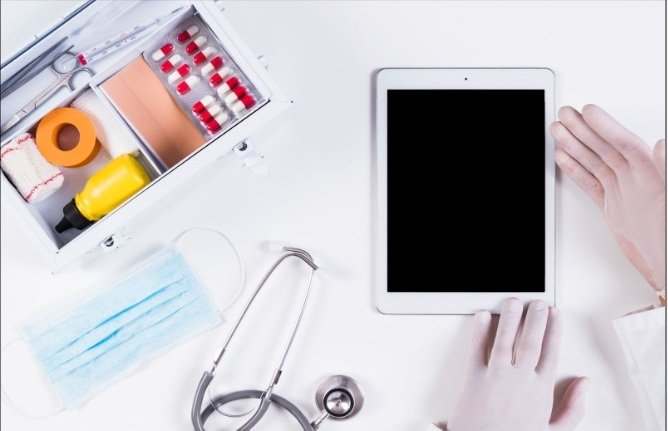
In today’s complicated healthcare environment, trust is the foundation for a successful treatment. Patients rely on healthcare providers not only to allow access to medicines but in addition to make sure that they are safe and effective. Transparent monitoring of medicine which is also known as post-market surveillance or medication oversight, plays a crucial role in establishing trust.
As new medicines are developed and made available to the market in a fast-paced manner. There is a growing need for clear, transparent systems that can provide accurate information to health personnel, patients and regulators regarding the health and safety of the medications. Transparency is the term used to describe providing current, accurate information regarding the use of drugs, adverse reactions, the integrity of the supply chain and more.
What Is Transparent Medicine Monitoring?
Transparent medicine monitoring is the systematic process of monitoring the performance of a drug, recording it, and sharing data about the performance of a medication after it is released on the market. This involves tracking adverse effects, long-term effectiveness, and interactions with drugs, as well as concerns related to manufacturing and distribution.
Contrary to clinical trials which are restricted in time and scope, real-time monitoring spans a wide range of patients over a prolonged period. Transparency ensures that this data is accessible and understandable to all stakeholders–patients, doctors, pharmacists, researchers, and regulatory authorities.
Why Transparency Matters in Medicine
The foundation of trust in healthcare lies on the assumption that treatment is safe and supported by scientific evidence. If the information on medication is not clear, inconsistent or not readily available, it could create anxiety, confusion, as well as non-compliance. Transparent monitoring addresses this issue:
- Improved the confidence of patients in the prescribed treatment
- Helping healthcare professionals make informed choices
- Insuring the accountability for pharmaceutical companies
- Helping regulators in the enforcement of guidelines and issuing prompt advisory
The goal is to promote an approach that is patient-centered in which patients are engaged in their own treatment process and are empowered with precise data.
Key Components of Transparent Medicine Monitoring
Transparent monitoring is a series of interconnected processes:
Adverse Event Reporting
Healthcare professionals and patients must be able to communicate side symptoms quickly and effectively. The reports are then analyzed to find patterns or indicators which could signal a bigger concern for safety.
Open Access to Drug Information
Current information on the safety of medication prescription guidelines, usage, and interactions that are known to occur should be available to the public. Platforms that make it easy to understand the information in simple terms are particularly helpful for patients.
Pharmaceutical Accountability
Drug makers are expected to disclose changes in production or quality control issues or withdraw batches in advance. Transparent systems guarantee that the disclosures are made in a timely manner and readily visible.
Real-World Evidence Integration
Information gathered from pharmacies, hospitals and research studies is analysed to evaluate how a given drug performs in different populations. This aids in defining guidelines for treatment and identifying the potential dangers.
Communication During Crises
In the event of recalls of drugs or safety issues that are emerging or disruptions in supply chain operations. Transparent and consistent communication reduces anxiety and builds confidence.
Role of Technology in Enhancing Transparency
Digital technology has changed how the medicine monitoring process is carried out. Mobile applications, web-based portals and cloud-based databases, as well as artificial intelligence-driven analytics have made it easier to share information and collect details about the security of medicines in real-time.
Some platforms allow patients to scan the barcodes of medication to instantly gain access to the most recent safety information, along with the batch history and any potential negative effects. Other platforms provide clinicians with access to dashboards which display recent alerts about medicines and track the reaction of various patient groups.
Platforms such as Pharmaknowl are at the forefront in guiding you to bring transparency and accountability to the top of the line in monitoring medicine. Through the combination of data science, regulatory knowledge and a user-friendly design, these platforms are helping to bridge the gap between pharmaceutical companies as well as healthcare providers and patients. They aim to make the information on drugs more readily available, reliable and beneficial for all affected.
Benefits for Stakeholders
Transparent monitoring of medicines offers distinct advantages to different participants:
For Patients:
- Increased confidence in the prescriptions they give
- Ability to be part of the decision-making process with others
- Alerts in advance about possible adverse effects or recalls
For Healthcare Professionals:
- Better diagnosis of issues related to drugs
- Better treatment suggestions for the adjustment of treatments
- A higher level of adherence to safety protocols
For Pharmaceutical Companies:
- Improved reputation by active communications
- Reduction of legal and regulatory risk
- More informed R&D choices based on actual performance
For Regulatory Authorities:
- Improved detection of security signals
- Effective enforcement of the drug policy
- Better collaboration with the global health organizations
Challenges to Transparency
Although the benefits are obvious, implementing transparent monitoring systems can be a challenge. difficulties. Some of the biggest challenges include
- Privacy concerns for data particularly when it involves patient data
- There is no standardization of report formats across different regions
- Inconsistently apprehensive participation by health professionals
- A limited digital infrastructure in certain areas
To overcome these challenges, collaboration is required between private businesses, governments as well as medical institutions and civil society. In addition, training healthcare providers and informing patients on the importance of monitoring play an important part.
Looking Ahead
As healthcare is becoming more data-driven and patient-centric transparency won’t be an option but a requirement. Establishing trust through transparent medical monitoring isn’t only a legal requirement but also a moral requirement. It ensures that everyone involved, from your prescription to the shelf at the pharmacy are involved in a system that is focused on safety and efficiency.
The path to trust starts with open eyes, clear data, and a dialogue that is open dialogue.



